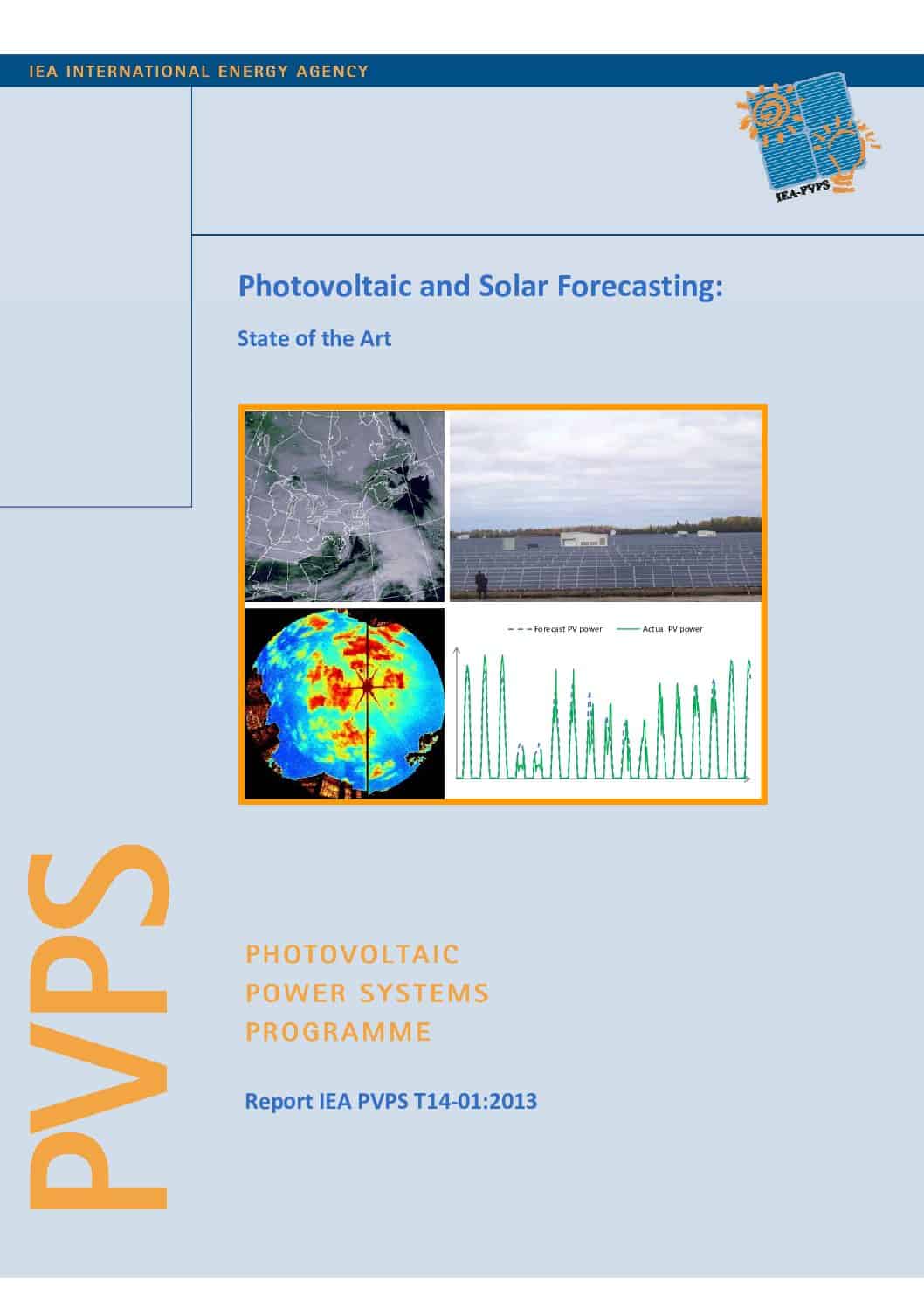With decreasing prices, Photovoltaics (PV) systems represent a rapidly emerging source of electricity in the World. Grid-connected PV systems have rapidly progressed and have now reached the 100 GW-mark of production capacities worldwide begin of 2013. With already high penetration in the electricity system of several countries, the need for an optimal forecasting of electricity production is becoming of must for grid operators but also for preparing the integration of PV systems in the electricity markets.
The current report provides a snapshot of the state of the art of solar in general and photovoltaic forecasting methods. This dynamic research area focuses on solar and PV forecasts for time horizons ranging from a few minutes ahead to several days ahead. Diverse resources are used to generate solar and PV forecasts, ranging from measured weather and PV system data to satellite and sky imagery observations of clouds, to numerical weather prediction (NWP) models which form the basis of modern weather forecasting.
Finally, it explores the forecasts accuracy through its driving factors: Benchmarking efforts have been conducted to compare the accuracy of various solar and PV forecast models against common datasets. Such benchmarking is critical to assessing forecast accuracy, since this accuracy depends on numerous factors, such as local climate, forecast horizon and whether forecasts apply to a single point or cover a wide geographic area. In the latter case, which is often the main interest of electric system operators, higher accuracies can be achieved since random errors at distant locations tend to be largely uncorrelated and to partially cancel out.
